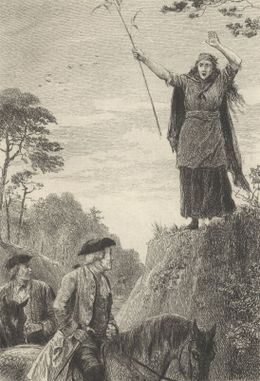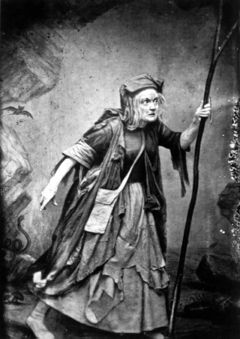Annotation:Meg Merrilies: Difference between revisions
No edit summary |
No edit summary |
||
| Line 1: | Line 1: | ||
{{TuneAnnotation | {{TuneAnnotation | ||
|f_annotation='''MEG MERRILIES/MERRILEES'.''' English, Scottish, Shetland; Country Dance Tune, Hornpipe or Reel. G Major (Dixon, Hardings): A Major (Athole, Honeyman, Howe, Hunter, Kerr, Lees). Standard tuning (fiddle). AB (Athole): AAB (Kerr): AABB (Honeyman, Howe, Hunter, Lees | |f_annotation='''MEG MERRILIES/MERRILEES'.''' English, Scottish, Shetland; Country Dance Tune, Hornpipe or Reel. G Major (Dixon, Hardings): A Major (Athole, Honeyman, Howe, Hunter, Kerr, Lees, Lowe). Standard tuning (fiddle). AB (Athole): AAB (Kerr): AABB (Honeyman, Howe, Hunter, Lees): AABB' (Hardings): ABC (Lowe): AABBCCDDEEAABB (Dixon). Meg Merrilies is the name of a Scottish country dance, commonly taught by dancing masters in the 19th century. Elias Howe (c. 1867), however, classifies it as an "English Country Dance." The Shetland variant has a distinct character that distinguishes it from the Scottish (Cooke). Dixon (1995) prints the melody with variation sets by Robert Whinham (1814-1893), a musician, teacher, composer, dancing master and fiddler originally from Morpeth, Northumberland. | ||
<br /> | <br /> | ||
<br /> | <br /> | ||
Latest revision as of 04:36, 21 April 2021
X:1 T:Meg Merrilies M:C| L:1/8 R:Country Dance B:Clementi & Co. - Periodical Collection of Popular Dances No. 26 (c. 1820's?, p. 2) Z:AK/Fiddler's Companion K:Bb de|fdBd fbag|(gf).f.f gfde|fdBd fgfd|(dc).c.c dcde| fdBd fbag|(gf).f.f gfde|fgfd fbfd|(cB)BB B2:| |:f2|efgf efcf|dfBf dfBf|efgf efcf|dB TBA/B/ fBbB| efgf efcf|dfBf dfBf|efgf efcf|dBBB B2:|]
MEG MERRILIES/MERRILEES'. English, Scottish, Shetland; Country Dance Tune, Hornpipe or Reel. G Major (Dixon, Hardings): A Major (Athole, Honeyman, Howe, Hunter, Kerr, Lees, Lowe). Standard tuning (fiddle). AB (Athole): AAB (Kerr): AABB (Honeyman, Howe, Hunter, Lees): AABB' (Hardings): ABC (Lowe): AABBCCDDEEAABB (Dixon). Meg Merrilies is the name of a Scottish country dance, commonly taught by dancing masters in the 19th century. Elias Howe (c. 1867), however, classifies it as an "English Country Dance." The Shetland variant has a distinct character that distinguishes it from the Scottish (Cooke). Dixon (1995) prints the melody with variation sets by Robert Whinham (1814-1893), a musician, teacher, composer, dancing master and fiddler originally from Morpeth, Northumberland.
However, the title Meg Merrilies derives from the name of a character in Sir Walter Scott's Guy Mannering [1] and, separately, the subject of a poem by John Keats (1795–1821) that begins:

Old Meg she was a Gipsy,
And liv'd upon the Moors:
Her bed it was the brown heath turf,
And her house was out of doors.
Her apples were swart blackberries,
Her currants pods o' broom;
Her wine was dew of the wild white rose,
Her book a churchyard tomb.

The characters in both works were based on a person named Jean Gordon, a mid-18th century inhabitant of the village of Kirk Yetholm in the Cheviot Hills, and wife of the King of the Gypsies, Patrick (sometimes "Johnnie") Faa. The character is that of a gypsy, or a half-mad seeress. Guy Mannering was adapted for the stage and the character of Meg was memorably played by the American actress Charlotte Cushman (1816-1876) in New York.

